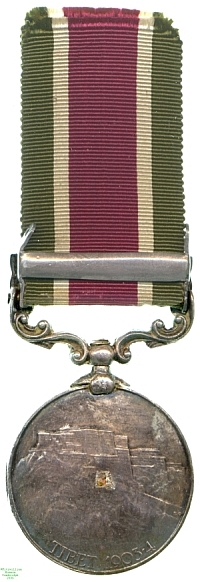
Obverse, a bust of King Edward VII facing left

Reverse, the fortress of Potala Lhassa atop a mountain ridge

Obverse, a bust of King Edward VII facing left |

Reverse, the fortress of Potala Lhassa atop a mountain ridge |
Tibet, on the frontier between the British possessions in India and the sphere of interest of expanding Russia, evoked the same kind of international political paranoia among British strategists as did the Indian North-West Frontier, and after a trade mission in 1903 had met with a hostile reception there a British expedition was sent that forced its way through to Lhasa, where new and more favourable trading arrangements were decided on in collaboration with the Chinese. Although the Dalai Lama of the time had fled to Mongolia at the British approach, the secular officials who agreed on the Treaty were able to confine the British to the city of Gyantse until 1944.
Some of the most vicious fighting on the British expedition was met with in and around Gyantse, and the bar that this medal bears acknowleges participation in that fighting, by Subadar Jangbir Rana, of the 8th Gurkha Rifles, to whom this medal was awarded. His exploits in this theatre also earnt him the Indian Order of Merit. It is one of four medals that were awarded to him that are now in the Watson Collection, including the Order of Merit; the others precede and follow. The medals are not attached to each other so although the Watson Collection catalogue considers them as Group 3 they have been treated separately here. Nonetheless, it was as a group that Lester Watson purchased them from the dealer Gifford, in 1928.